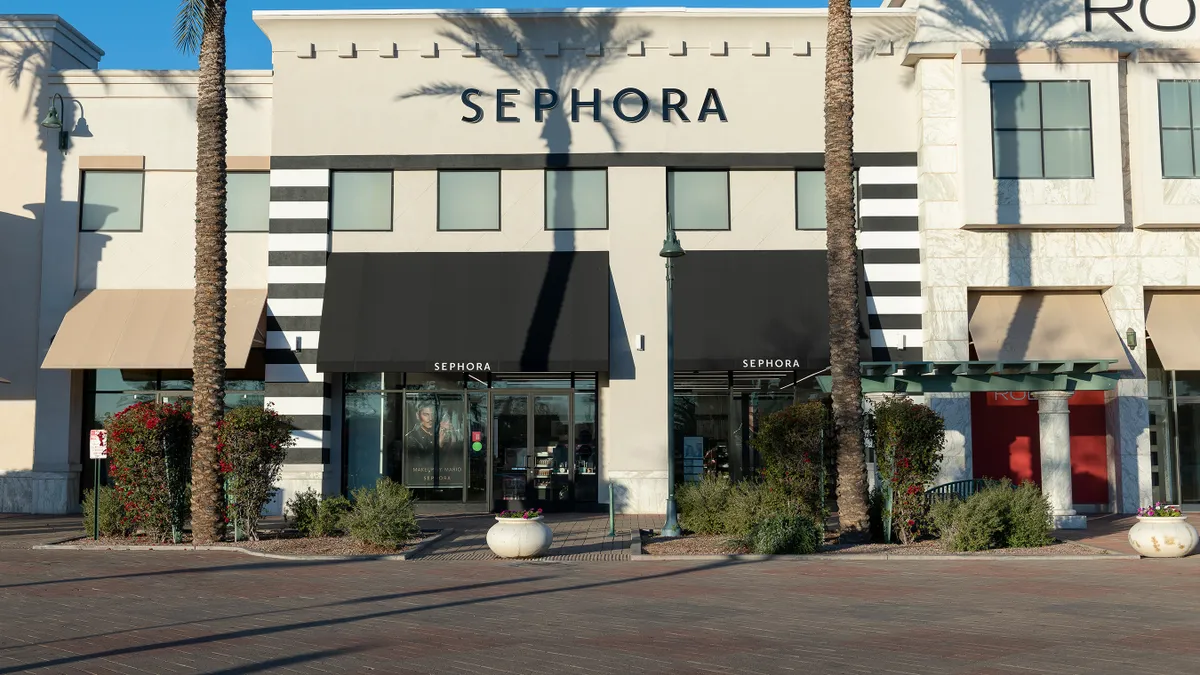Sephora has an annual sale event in the spring. Loyal shoppers plan their hauls, and brands sold by the retailer promote it like Amazon's Prime Day or Nordstrom's Anniversary Sale. But this year, the sale had a significance in ways brands and shoppers may never know.
Having the biggest sale of the year in April meant Sephora's supply chain was flexed and ready for surging volume when executives temporarily closed all stores in March, roughly five weeks before the promotion.
When the coronavirus pandemic shifted the majority of retail business online, several retailers lamented that they can handle that kind of e-commerce volume — the kind they see in peak season — but only with months of prep.
Sephora's April sales event meant the company was at least somewhat ready for an online explosion, said the retailer's SVP of Supply Chain Mike Racer at Reuters' Retail Supply Chain USA virtual summit Thursday.
"All of our stores have to close ... and all eyes turned on us to be able to deliver," Racer said. E-commerce order numbers specific to the beauty retailer are hard to come by, since Sephora is wrapped up within its parent company LVMH.
"It wasn't perfect admittedly," Racer said, indicating that Sephora was not immune to the many forces delaying packages during the pandemic. "But we certainly were able to meet the business need in a way that the client appreciated, and we gained market share as a result of that which is great."
Warehouse throughput over capacity
Beyond warehouse locations, inventory positioning and automation, Racer said a common conundrum for operations management is efficiency versus capacity.
"How do you balance the efficiency of a system with the ability to get a lot of stuff through it?" Racer asked.
"We still have manual facilities, don't get me wrong. But, but we're relying less and less on them."

Mike Racer
SVP of Supply Chain at Sephora
Sephora's annual spring promotion led Racer to improve throughput as a measure of readiness years before the pandemic. Elevating throughput as a KPI equal with operational efficiency improved the company's performance during times of expected and unexpected stress.
LVMH CFO Jean-Jacques Guiony said on a July earnings call that Sephora's readiness for the pandemic channel shift offered justification for the investments the company has made to date.
Planning inventory to the forecast — not the budget
Keeping the beauty emporium's head above water despite the onslaught of online orders wasn't all timing and luck. Racer outlined years of evolution and investment since he came on board in 2011 — 12 years after Sephora's website launched in 1999.
He pointed out three main areas of investment for the company — network design, inventory management and what Racer called "a seat at the table."
A well-designed warehouse network helps the retailer keep up delivery speeds even when carriers are faltering as several did in the spring and early summer. Sephora has five warehouses in the U.S., making nearly everywhere in the country a two-day ship zone (in normal shipping conditions).
Within those warehouses, Racer and his team built in flexibility to move product to the channels where it would be most productive.
"We've developed tools and systems that allow us to move zip codes around on the fly. Move inventory between retail and [e-commerce fulfillment] buildings because we decided early on we wanted to commingle those buildings," Racer said. And though the company still does plenty of manual fulfillment, automation is gaining share of the process.
"We've proven that the payback is pretty massive. Our ability to get stuff out, get it out quickly, get it out accurately has been a game-changer for us in both of those arenas. Now we still have manual facilities, don't get me wrong. But, but we're relying less and less on them as we build new and more automated [facilities]," Racer said.

Optimizing the inventory for e-commerce was more of a cultural shift than a technological fix for the retailer — one Racer said he had to fight for.
"Everybody's trying to manage inventory based on the budget. And you can't manage a budget inventory when sales are growing 30% or 20% ... and your budget was planned at 10%. So we had to shift the culture of the company," Racer said.
Aligning inventory with sales forecasts led to a more forward-looking mindset, he said, which made a significant difference in the company's stockouts.
"Our out-of-stocks are industry-leading, or at least close to that, because we're always looking ahead," Racer said.
This story was first published in Supply Chain Dive's weekly newsletter, Supply Chain Dive: Operations. Sign up here.












